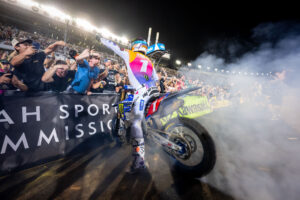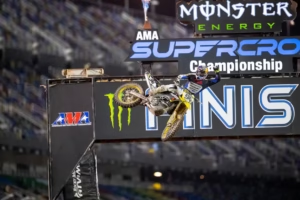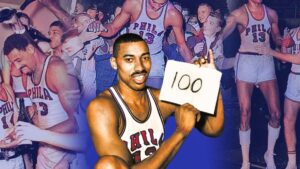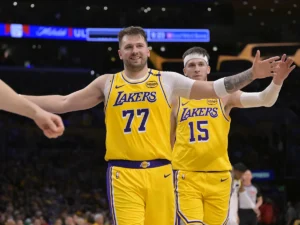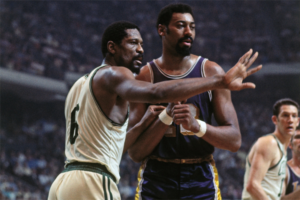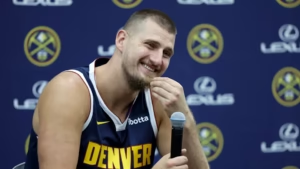Pierce Brown silenced his critics in spectacular fashion at Daytona, proving that determination and resilience are just as important as raw speed in Monster Energy Supercross. After nearly five months off the bike and close to nine months since his last race, Brown returned with a vengeance, securing a career-best third-place finish.
For those quick to judge his preparation or his team’s methods, Brown’s performance was the perfect rebuttal. As he himself admitted, the nerves were real. “It felt like my first race ever,” he said. “I did not expect to be on the podium… I couldn’t be happier.”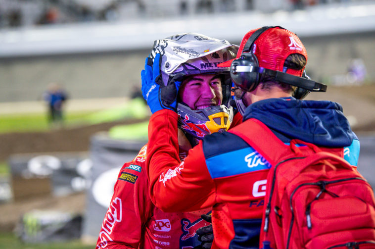
A Tough Road Back
The journey back to racing was anything but smooth for Brown. Limited offseason training left him feeling underprepared, but that didn’t stop him from pushing through. “It’s definitely been a building process,” he explained. “I got six weeks of an offseason and I came in super unprepared… But I trusted my ability, and next thing I know, I was in third place. Justin Cooper was right there on me at the end, and I just had to put my head down and dig deep.”
Brown’s perseverance paid off in one of the most physically demanding rounds of the season. Daytona isn’t just another stop on the calendar—it’s a grueling test of skill and endurance, and for him to land on the podium under those circumstances speaks volumes.
The Reality of Professional Racing
When we filmed the latest episode of B&W with Pierce, we had no clue how the day would unfold. That’s the beauty of capturing these moments—the unpredictability. There’s no script, no rehearsed dialogue, just an honest look at what these riders go through.
And the truth is, it’s not always sunshine and podiums. Some days are rough. Some training sessions don’t go as planned. Some conversations between rider and mechanic get intense. That’s the nature of the sport. The grind behind the scenes is what makes the victories so meaningful.
The Controversy: Tough Love or Too Much?
When Brown’s B&W episode dropped, the internet had plenty to say. Many questioned the coaching methods of his technician, Kristian, debating whether the tough-love approach was effective. But here’s the thing—we don’t know the dynamic between the rider, the mechanic, and the team. What works for one athlete might not work for another.
What we do know is this: Brown showed up at Daytona, after months off the bike, and rode his way to his best career finish. If that’s not proof that his process is working, what is?
So before we criticize from behind a keyboard, maybe we should appreciate the effort these riders put in. Supercross is no easy job. It’s brutal, both physically and mentally. And for Brown, every sacrifice made that third-place finish all the more rewarding.

